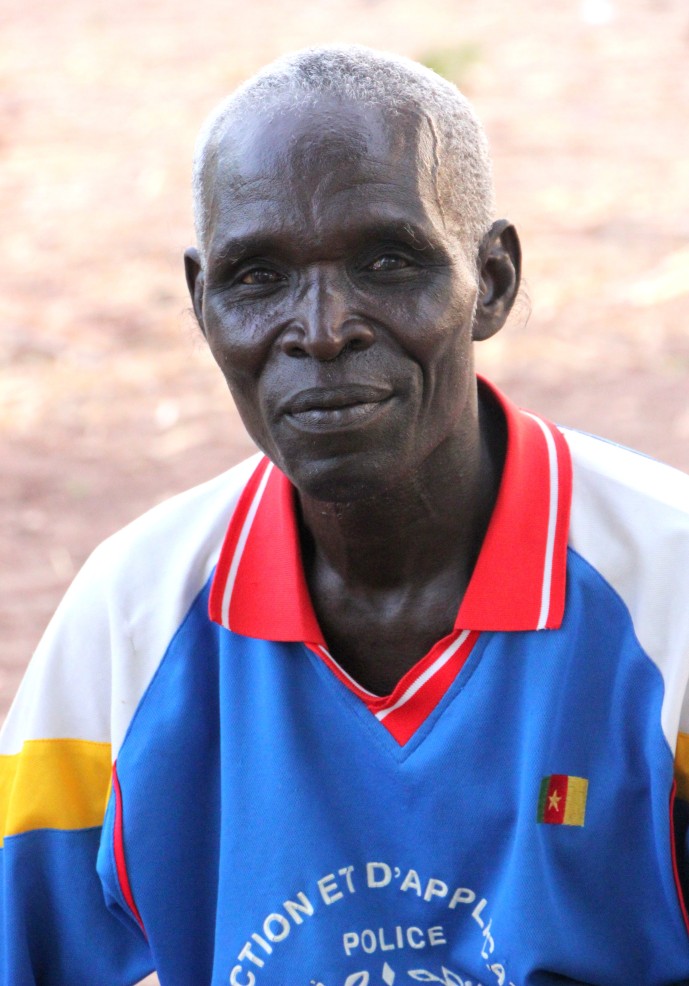If you are a woman living in a village in the Far North of Cameroon, chances are you’ve been raising chickens since you were knee-high to a grasshopper. And chances are, every year in the cold dry months you’ve watched helplessly as your chickens stop eating, droop their wings, and begin listlessly walking in circles – then keel over and die. Despite the fact that these chickens account for most of your family’s income—and 16% of the country’s poultry—there’s been nothing you could do but watch your food & income perish.
This scourge of chickens is called Newcastle disease and although it’s been an affliction here in the Far North for years, little has been done to combat it. The day we visited Pauline Tcaday and Madeline Maylaou, two chicken farmers in Kar Hay, we saw the carnage first hand.
Pauline’s flock of 100 birds had been totally healthy until she brought one new chicken home from the market. That chicken was infected and now her entire flock was dying. 53 of Madeline’s 56 chickens had perished in a single day. And almost overnight, the village population of 79,000 chickens had shrunk to 28,000 — a loss of about $170,000!
Luckily, a plan is in action that will help 9,000 rural farm families like Pauline’s save their chickens– and the vital income & nutrition they represent. Heifer International, in collaboration with GALVMed(a non-profit global provider of livestock vaccines), and MINEPIA (Cameroon’s Ministry of Livestock, Fisheries and Animal Industries) has started a pilot program in 40 rural villages to vaccinate 490,000 chickens against Newcastle disease – and it’s brilliant on about 5 different levels.
First, it’s a sophisticated, well-coordinated, thoughtful campaign based on research and epidemiology. The vaccine is highly effective in protecting against the disease and if every chicken were treated, Newcastle’s could effectively be wiped out in a few years. That’s not just chicken pot-pie thinking; it’s a potential reality.
But initiating a program this ambitious has been anything but simple. Heifer and team had to figure out the cold chain to keep the vaccine viable (in a country where electricity is spotty); adjust the dosage size so a vial could be administered in a single day; and find dependable, experienced people to see the program through.
Eight Animal Health Care Workers with diplomas in animal husbandry were hired and provided with 4 motorcycles to reach the 40 far-flung villages, and 4 solar refrigerators to keep the vaccine at its essential cool temperature in their vet stores.
The AHCW supervise the Village Vaccinators, two per village, who are local residents, literate, and have been trained to administer the vaccine to the chickens (by eyedrop). The Vaccinators have been given new bikes and insulated cooler boxes that will keep the vaccine fresh while they travel from the vet store to their villages.
The vaccine costs 50 francs (10 cents), administered 3 times a year. So for 30 cents annually, farmers can protect a chicken that will fetch $3-$5 in the market. What’s more, the 50-franc fee covers the price of the vaccine, the salary of the AHCW, and the Vaccinators – meaning the program is immediately self-sustaining, and everyone involved has a strong motivation to make it a success. And in late May this year, vaccinations began.
For farmers in the Far North, the stakes couldn’t be higher. Not only does chicken income pay for school tuition, health care and clothes, animal protein is already in perilously short supply, while the population is projected to grow by almost 30% in the next 5 years. With 38% of the children in the Far North currently malnourished, a strong, steady supply of chicken that the people could both eat and sell would be nothing short of a miracle.
When I asked Pauline and Madeline if their families ate their chickens’ eggs or sold them, they burst out laughing. “We don’t eat eggs, we don’t sell eggs,” they said ruefully. “We don’t even eat our chickens. We’re poor and we have to sell them.”














